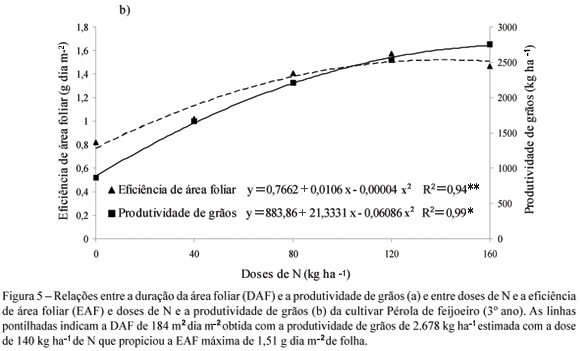An experiment was carried out on varzea (lowland) soil of the State of Tocantins, Brazil, to determine the effects of rate, method and timing of N application on physiological characteristics of common bean. In the first two years, N rates evaluated were 0, 40, 80, 120 and 160 kg ha-1 and application timing were: M1, all N applied at sowing; M2, ½ at sowing + ½ incorporated in the soil at 20 days after plant emergence and M3, ½ at sowing and ½ applied as topdressing 20 days after plant emergence. In the third year, nitrogen rates tested were applied only at 20 days after plant emergence and incorporated into the soil. The bean cultivars used were Rudá in the first two years and Pérola in the last one. In tropical varzeas, common bean crop shows low nitrogen use efficiency. That's why that crop shows response to high rates of nitrogen. Total N applied and incorporated at sowing and the application of a part at sowing and a part 20 days after emergence require lower N rate to obtain higher physiological indices compared to fertilizer applied as broadcast at the soil surface. This rate differ with N rate that produced higher grain yield. The N rate of 140 kg ha-1 was more efficient to common bean crop, producing more grains per unit leaf area. Higher nitrogen rate promotes higher biological yield and physiological indexes.
Phaseolus vulgaris L; leaf area; dry matter; growth; nitrogen topdressing










